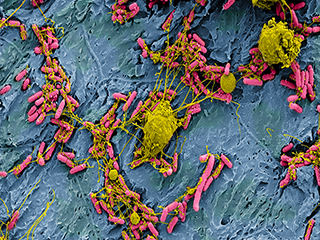Course Description
How can a tick bite cause a meat allergy? And does cranberry juice do anything to help cure a urinary tract infection? To answer these and other questions, we are going to take a dive into the molecular world of microbes. In this class, we will use the primary research literature to explore the molecular interactions …
How can a tick bite cause a meat allergy? And does cranberry juice do anything to help cure a urinary tract infection? To answer these and other questions, we are going to take a dive into the molecular world of microbes. In this class, we will use the primary research literature to explore the molecular interactions between pathogens and their hosts that allow microbes to cause infectious diseases. We will examine the factors that pathogens use to colonize a host and how the host response can impact the outcome of the infection. By the end of the class, students will have both developed critical scientific skills in evaluating scientific literature and an appreciation of the microbes influencing our lives and health every day.
This course is one of many Advanced Undergraduate Seminars offered by the Biology Department at MIT. These seminars are tailored for students with an interest in using primary research literature to discuss and learn about current biological research in a highly interactive setting. Many instructors of the Advanced Undergraduate Seminars are postdoctoral scientists with a strong interest in teaching.
Course Info
Instructor
Departments
Learning Resource Types











